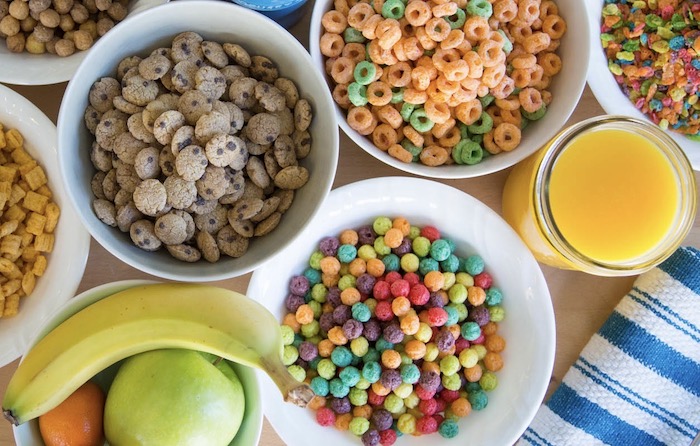EWG New Report on Sugar in Children’s Cereals: One Serving Equal To Three Chips Ahoy Cookies
 December 24, 2014
December 24, 2014  Kyriaki (Sandy) Venetis
Kyriaki (Sandy) Venetis  Image courtesy of Melia Robinson/Business Insider.The Environmental Working Group’s newest report, Children’s Cereals: Sugar by the Pound, finds that very little has improved since 2011 – the last time the group did a survey of the cereal industry.
Image courtesy of Melia Robinson/Business Insider.The Environmental Working Group’s newest report, Children’s Cereals: Sugar by the Pound, finds that very little has improved since 2011 – the last time the group did a survey of the cereal industry.
As part of a larger study, the EWG again reviewed a smaller sample of 84 popular children’s cereals that had it originally evaluated in 2011 and found that while a handful of manufacturers lowered the sugar content of their cereals, “the vast majority are still too sweet to be healthy, averaging two teaspoons per serving.”
The new report did a comprehensive analysis of 1,556 cereals, including 181 marketed for children and found that “not one was free of added sugars.” In addition, the group found that, “On average, children’s cereals have more than 40 percent more sugar than adult cereals, and twice as much as oatmeal.”
Also among the concerning issues highlighted by the report were how these cereals were marketed to children, prominent nutritional claims, and the use of unrealistically small portion size measurements on nutritional labels.
The report found that for many cereals, a single serving size exceeded 60 percent of the daily amount of sugar suggested by health agencies and organizations, and “because the serving sizes on cereal labels are unrealistically small, many children eat multiple servings in a single siting.”

